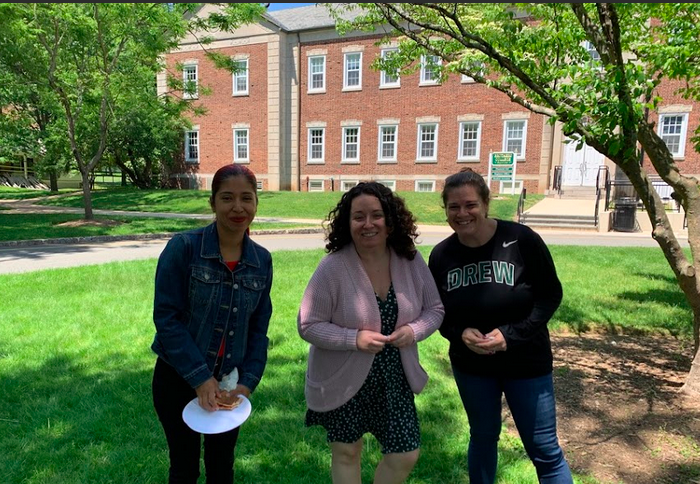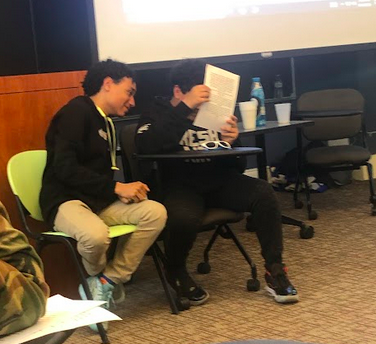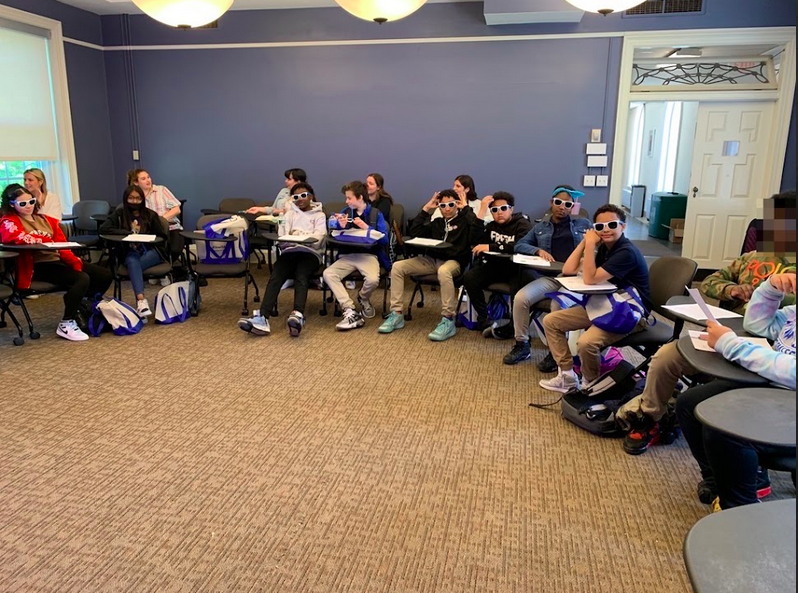By: Clemencia Acevedo

It’s the wish of every teacher to see our students busy and excited crafting their writing pieces in groups or independently in class. An energy of enthusiasm takes over each corner of the classroom. A dream where they concentrate on finding the right words to visually build vivid settings and dynamic and colorful characters. The type of writing that integrates all the literary elements we teach over the course of many lessons. Yet, as teachers, transferring our passion for writing to our students can often be a struggle.
We find ourselves asking how we can inspire our students not to be afraid of writing, at least for those who say, “I don’t like writing.” There can be a number of solutions to bypass this challenge. One among them is giving them the opportunity to share their finished writing pieces with an authentic audience, an audience in and outside the school building. An audience where our students feel appreciated as writers for the effort and dedication they put into their masterpieces.

This past school year, 2022-23, our team at The Drew Writing Project, a branch of the National Writing Project, put into practice a goal our community has been discussing over several past meetings. Our vision is to give students an opportunity to share their writings in front of an audience outside the classroom. This past May 2023, my 7th-grade students from Don Pedro Albizu Campos- PSMS161, NYC Public School, visited Drew University and shared their written pieces with their peers and a small group of Drew Professors of Education and student teachers. The result, is a joyous success. Students experienced what authors go through when they share their work for others to listen and appreciate their ideas and art in the form of words.
My young writers drafted and finished narratives inspired by museum objects over a period of weeks. How did that come about? Putting into practice the teaching ideas and skills I learned during our work under the National Writing Project’s Building a More Perfect Union Program, my students visited Edgar Allan Poe’s Cottage in the Bronx to learn about the writer who some consider the master of suspense. The goal was for my 7th graders to observe the objects, the artifacts that formed the identity of one of the early prolific American writers, Mr. Poe. The visit served as a hook to introduce them to the writer behind The Tell-Tale Heart, a mentor text we were scheduled to read, deconstruct, and analyze the different literary elements in the piece, and, most importantly, put an analytical emphasis on how Mr. Poe developed mood. Students were tasked to write their own writing narratives that specifically included mood and a variety of literary elements. As students approached their finished pieces, they were informed about the opportunity to read aloud their writings to an audience outside the school building. They were excited and continued putting effort into their work. Yes, some were nervous, but others were super excited; nonetheless, all were thrilled to experience learning in a different environment. Traveling somewhere new was a motivation itself and re-energized their passion to continue adding as many literary elements they had learned in previous lessons. These included imagery, similes, metaphors, hyperbole, onomatopoeia, personification, and mood.

“5 Authentic Audiences to Ramp Up Students’ Interest in Writing” highlights the point that creativity improves as students see a higher purpose in the quality of their work and not just for a grading score. Indeed, they dig into their creativity, knowing their work will reach a wider audience. Authentic audiences open doors for students to see themselves as writers since a wider audience besides their teacher and peers take part in conversations where their work is praised, validating their ideas and unique writing lines.
When writers have a listening audience, they feel their words carry weight and are meaningful, as teachers express in “Writing for an Audience Beyond the Teacher: 10 Reasons to Send Student Work Out Into the World.” Young writers are motivated by knowing what they think matters. That is what we want our students to walk away with at the end of the year: their words matter, and there is an audience outside the classroom willing to listen to what they want to say. As educators, we raise their voices and leave a lasting positive experience in the journey they share with us as they follow their unique paths in life.
Tips to Organize a Trip for An Authentic Audience Event:
- Identify and partner with an institution, organization, bookstore, etc, for students to share their work.
- Ask colleagues willing to accompany the students, and you travel to the site event.
- Write a detailed proposal with the intention, learning objectives, and itinerary to be shared with your Principal for approval.
- Reach out to parents with details about the trip.
- Give out the trip permission forms in advance and collect them before leaving the school building.
- Give out consent forms if you plan to take pictures and videos.
Students will remember the people who made a difference in supporting them and were a part of their journey towards falling in love with writing and literature. Special thanks to Ms. Simmons and Ms. Slattery, who took the day to accompany our 7th graders and supported them in revising and finishing their stories. Also, thanks to Administration, Ms. Caceres, Ms. Guishard, Mr. Edusei, and Ms. Fernandez, for supporting our class trips.
Below are narratives the students completed and shared during our trip to Drew University for your enjoyment. They are both available in print and video. Use the Writing Feedback Form 2022-23 form to give your appraisal of their work if you wish to. In addition, you may refer to Teaching Mood in Writing Middle and High School Grades (7-12) Mini Unit to have your students explore their own mood writing narratives.
Text Format
- The Intruder by Liang Reyes
- The Murder Animal Mystery by Riudy Mendoza
- Red and Blue House by Daisy Guzman
- Aunty and Ruby in a Big Beautiful House by Nayla Castro
- What You Got is What You Deserve by Trinity Bryant
- The Big Mansion Power Mystery by Lorelys Jaquez Sanchez
- My Favorite Place by Victor Santos
Video Format:
- The Intruder by Liang Reyes
- The Murder Animal Mystery by Riudy Mendoza
- Red and Blue House by Daisy Guzman
- Aunty and Ruby in a Big Beautiful House by Nayla Castro
- What You Got is What You Deserve by Trinity Bryant
- The Big Mansion Power Mystery by Lorelys Jaquez Sanchez
- My Favorite Place by Victor Santos
